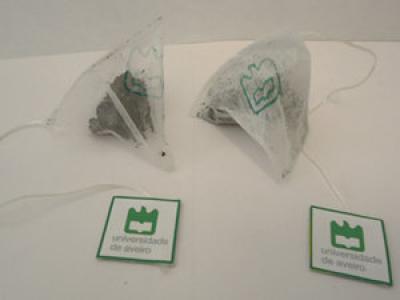Researchers at the University of Aveiro in Portugal designed unique "tea bags" using a porous graphene oxide foam, which they say can help purify water by removing dissolved mercury. These foams demonstrate several significant advantages over existing water purification systems: they are reusable, simple to synthesize and should be easy to produce in bulk at a relatively low cost. The scientists add that they are also not affected by pH, which is beneficial since other sorbents often need the pH to be optimized, which drives up costs.

The scientists heated graphene oxide with ammonia to create a porous 3D material with a high surface area. After screening their materials for their ability to adsorb various toxic pollutants, the team chose to focus on mercury, one of the top three on the EU’s priority list of hazardous substances in water. The "tea bag" form was chosen due to the fact that the foam sometimes broke apart, and also to optimize contact with water.
The teabag prototypes were able to remove 96% of the mercury dissolved in pure water in a day, which is better than activated carbon, one of the gold standard techniques for removing the heavy metal. When the team tested samples of river water containing pollutants other than just mercury, the material still performed well, removing 82% of the metal in a day.Performance in sea water was less effective, around 42%, because of other positive ions competing for functional groups on the surface.
The team says their systems could be used to de-contaminate waste water in chemical plants, and are now looking for industrial partners to help them commercialize the technology. Another potential application is drinking water purification in areas where mercury pollution is a problem, but the team states that for this to happen more work is needed. Currently, the European safe level for mercury in drinking water is 1ppb, and so far the graphene oxide teabags are only able to bring it down to 3ppb in samples. The team's initial priority is to use this technology for industry, but it plans, in the future, to also be able to work more on the graphene oxide surface so that it could be used for drinking water.

